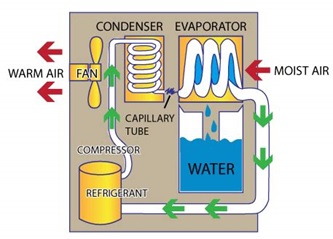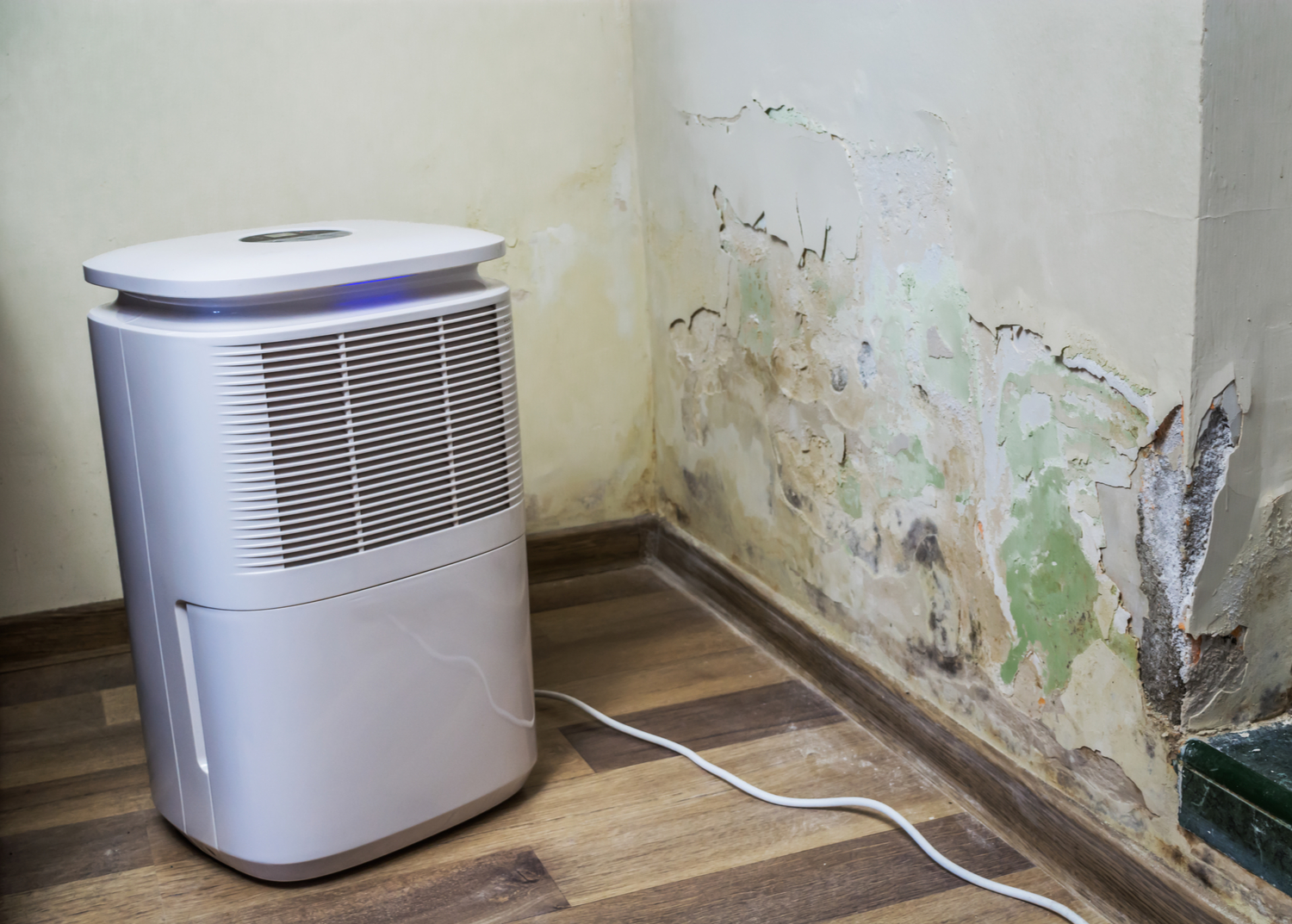At Water Mold Fire Restoration we use dehumidifiers in mold remediation, but not because the dehumidifier itself kills mold. Dehumidifiers are simply one of the tools we use to combat mold by eliminating moisture. Mold is like every other thing on planet Earth in that it requires water to survive and thrive.
Dehumidifiers accomplish moisture reduction by lowering humidity in a home or in a specific area of a home. But there is much more involved in removing mold infestations then by simply turning on a dehumidifier.
What Is Mold and Why Should It Be Removed From Homes?
In simplest terms, mold is a microorganism. Mold cannot be seen by the naked eye. In size, they are between 1 and 30 microns. To help you wrap your head around this, the diameter of a single human hair varies in size from 40-120 microns (1 micron equals 0.1 millimeters or 0.00004 inches).
Molds (fungi) absorb their food. Because of this they do not require light as most plants and animals do. That is why mold is most often found in darker areas of a home. As long as there is no moisture, there will be no mold. When any type of water intrusion occurs, the potential for microbial life explodes. This is why extensive drying is required after a water loss.
According to the Centers for Disease Control and Prevention (CDC), moldy environments may cause a variety of health effects. For people who are sensitive to mold, exposure can cause symptoms like a stuffy nose, coughing and wheezing, eye irritation, and skin rashes. In more serious cases, severe reactions like asthma and hypersensitivity pneumonitis may occur. The World Health Organization (WHO) reported that early mold exposure could be a link to childhood asthma development.
All in all, exposure to mold in homes and work places should be avoided. Nothing good (other than some cheeses) comes from exposure to mold and mold spores.
Dehumidifiers and What They Do
Basically a dehumidifier “is an electrical appliance which reduces and maintains the level of humidity in the air, usually for health or comfort reasons, or to eliminate musty odor and to prevent the growth of mold and mildew by extracting water from the air” .

A dehumidifier works a little bit like a vacuum cleaner. It pulls air in, but instead of removing dirt, it reduces the amount of water in that air through evaporation and then returns the drier air back into the room. It doesn’t remove 100% of the water in one cycle, otherwise a dehumidifier could be ran for an hour or so its job would be complete. Studies have shown that physically extracting water is 500 times more efficient than evaporating water (dehumidification is evaporation). A dehumidifier will continue to evaporate water from the air until humidity levels match the machine’s designed capability. The removed water condenses and is collected in a collection tray. When full, the tray must be emptied, or in the case of some dehumidifiers, the water may be automatically pumped out.
When a water restoration company remediates a water loss in a building, they will first physically extract as much water as possible. The rest of the water (moisture) must be evaporated and that’s the role of a dehumidifier. Their commercial-grade dehumidifiers are much more powerful and have the ability to remove much more humidity that the kind you can find at the major big box stores. To assist in the dehumidification process, the restoration company will make use of commercial air movers (specially designed high-output fans). Air movement across a wet surface will lift moisture off of the surfaces and place it into the air. Once the moisture is in the air, the dehumidifiers take over.
Reducing and/or limiting the amount of moisture in the air discourages mold’s growth. Remember, mold requires food and moisture to survive. So although dehumidifiers do not actually kill mold, they do a large part to keep it from growing.
I Just Have a High Humidity Issue
Many times homes, or areas in homes like basements or below-grade rooms, are faced with higher than normal humidity issues. One reason for this is that the earth surrounding below-grade rooms retains more moisture than the air. This results in higher humidity levels. In cases like these, where there has been no water intrusion or leaky plumbing, a standard dehumidifier made for the residential market will usually do a good job of controlling humidity.
The same holds true for laundry rooms. Your dryer evaporates moisture from your wet clothes. Even though the dryer is vented outside, the temperature will rise and warmer air can hold more moisture that cooler air. That’s why it seems sticky to us during warmer summer months. Warmer air just holds more moisture.
Conclusion
We’ve come a long way from “Do humidifiers kill mold?”, but a better understanding of the job of dehumidifiers is important to understand its role in reducing the likelihood of mold infestations. Dehumidifiers may not kill mold, but they do make it harder for mold to develop and grow.
If you have concerns about or have spotted mold in your home know that Water Mold Fire Restoration, 800-905-0277, stands ready to help. We answer our phones 24 hours a day and no emergency is too large or too small. If you prefer, you can also contact us at help@watermoldfire.net.








